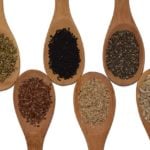
Is tilapia fish keto friendly?
Because it has no carbs, whole tilapia is a great choice for people on the keto diet.
It has also been processed very little and is free of anything that could be dangerous.
No Net Carbs –
Since tilapia doesn’t have any carbs, eating it won’t affect how many net carbs you can have in a day.
Not a lot of fat, but every little bit counts.
Since tilapia is low in fat, it’s important to eat it with foods that are high in the good fats.
While you are in the ketosis state, your body will use fat for energy, so it is important to eat foods with healthy amounts of fat.
MCT oil, butter from grass-fed cows, and extra virgin olive oil are all healthy fats that can be eaten on the ketogenic diet.
Foods from nature mean keto possibilities.
Most of the ketogenic diet should be based on eating whole foods, since these foods are full of nutrients
Cancer, heart disease, and type 2 diabetes are less likely to happen if you eat foods in their natural, unprocessed state.
On the keto diet, if you eat mostly whole foods that are low in carbs, you can lose weight and improve your health as a whole.
The Keto Diet-Friendliest Seafood to Consume
A ketogenic diet, sometimes known as the keto diet, is one that is rich in protein, high in fats, and contains an extremely restricted amount of carbs.
Unless you significantly broaden your culinary interests, maintaining this diet might be a challenge.
It’s a terrific way to find new favorites and comfort foods, so why not branch out and try some different fish and shellfish?
Due to its naturally high protein content and low carbohydrate content, seafood is an excellent choice for a ketogenic diet.
In spite of the fact that it has fewer calories than red meat, seafood is a good source of omega-six and omega-three ketogenic acids.
Several types of fish contain the highest levels of the fatty acids that will do your heart much good.
Salmon has some keto advantages
Vitamin B12 is found in salmon. It helps your body make DNA and keeps your blood and nerve cells working.
The real draw of salmon, though, is that it has a lot of healthy omega-3 fatty acids.
Most omega-3 fatty acids are considered “essential.”
They are not made by your body, but your body needs them very much.
They may also make the side effects of rheumatoid arthritis less noticeable.
Experts say that everyone should eat at least 8 ounces, or two meals, of seafood each week. Fish high in omega-3s, like salmon, are especially good for you.
The FDA and EPA say that kids should eat 1-2 servings (about 2 to 4 ounces) of seafood a week starting at age 2.
Small children and women who are expecting should not eat fish with the known levels of heavy metal.
But salmon isn’t one of them.
Risks
Even though omega-3s are good for your health, taking large amounts of omega-3s, like those in supplements, with anticoagulant drugs can cause bleeding problems.
So be careful to follow the rules listed above.
People also talk about the pros and cons of both wild and farmed salmon.
Some people say that pesticides and antibiotics are less likely to be in wild fish.
Others say that it is smart to choose farmed Atlantic salmon because its growth and harvesting are controlled by state and federal laws.
Fish shouldn’t smell “fishy.” Instead, it should smell clean and calm, not fishy.
When you go shopping for fish, make sure that it is either in the fridge or on a big bed of ice.
When frozen right, seafood should be firm and not leak or get mushy.
Make sure everything you use to cook your salmon is completely clean.
This means your hands, cutting boards, and any other tools you use to make food.
So, bacteria won’t be able to move from the fish you eat to anything else you eat.
If your salmon is still frozen, put it in the fridge overnight so it can slowly thaw.
If time is short, you can speed up the process by putting the frozen item in a bag that won’t leak and putting it in cold water.
You can also do it in the microwave, but you have to cook it right away after taking it out.
Also, seafood and other foods that spoil quickly shouldn’t be left out at room temperature for more than two hours.
The recommended internal temperature for salmon is 145 degrees Fahrenheit, or until the flesh turns opaque and can be easily flaked apart with a fork.
You can eat it raw, but you should freeze it first to kill any parasites that might be on it.
But germs can grow on raw fish, so doctors say you shouldn’t eat it that way. Instead, broil, grill, poach, or bake it. Sushi is always a gamble.






